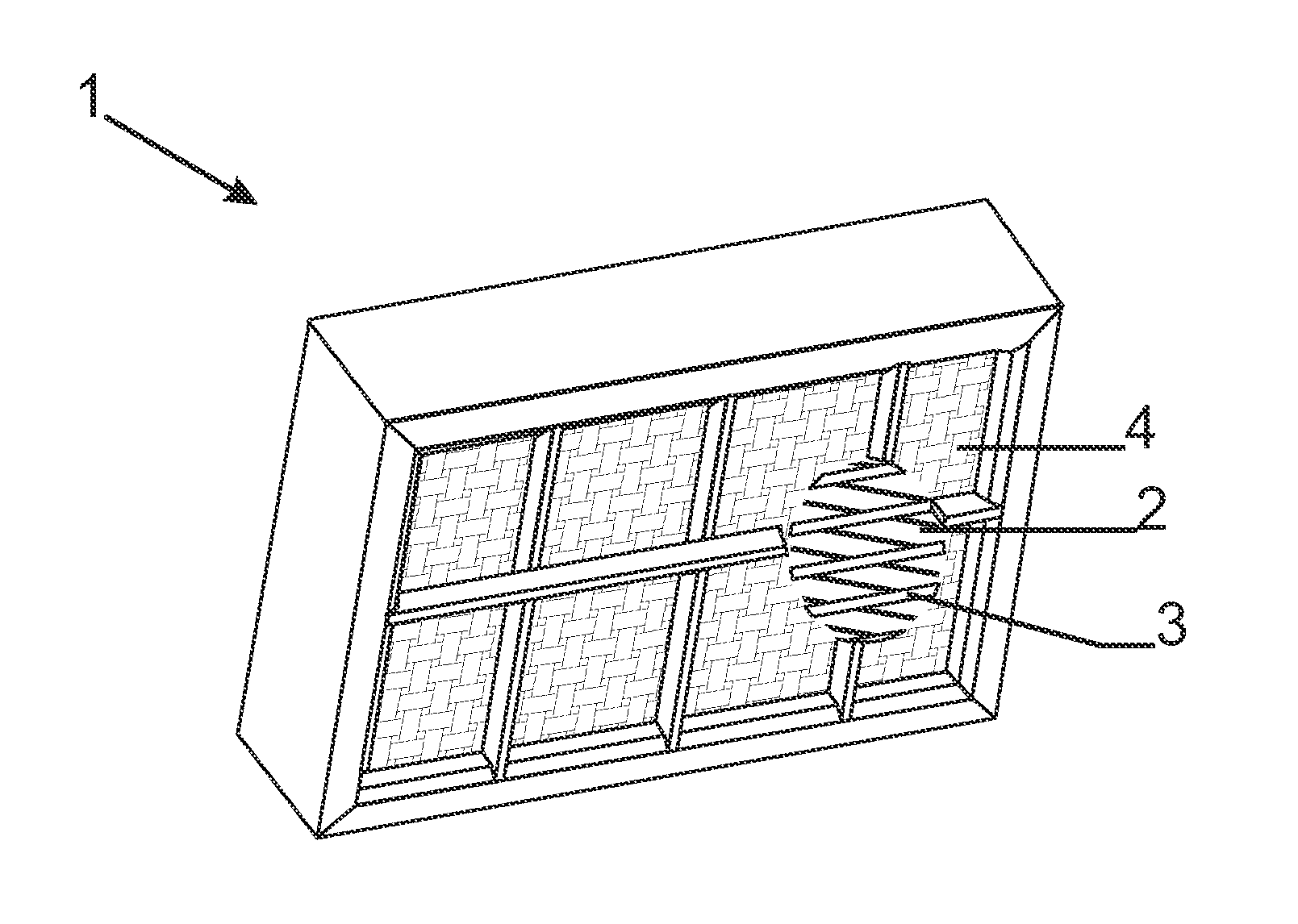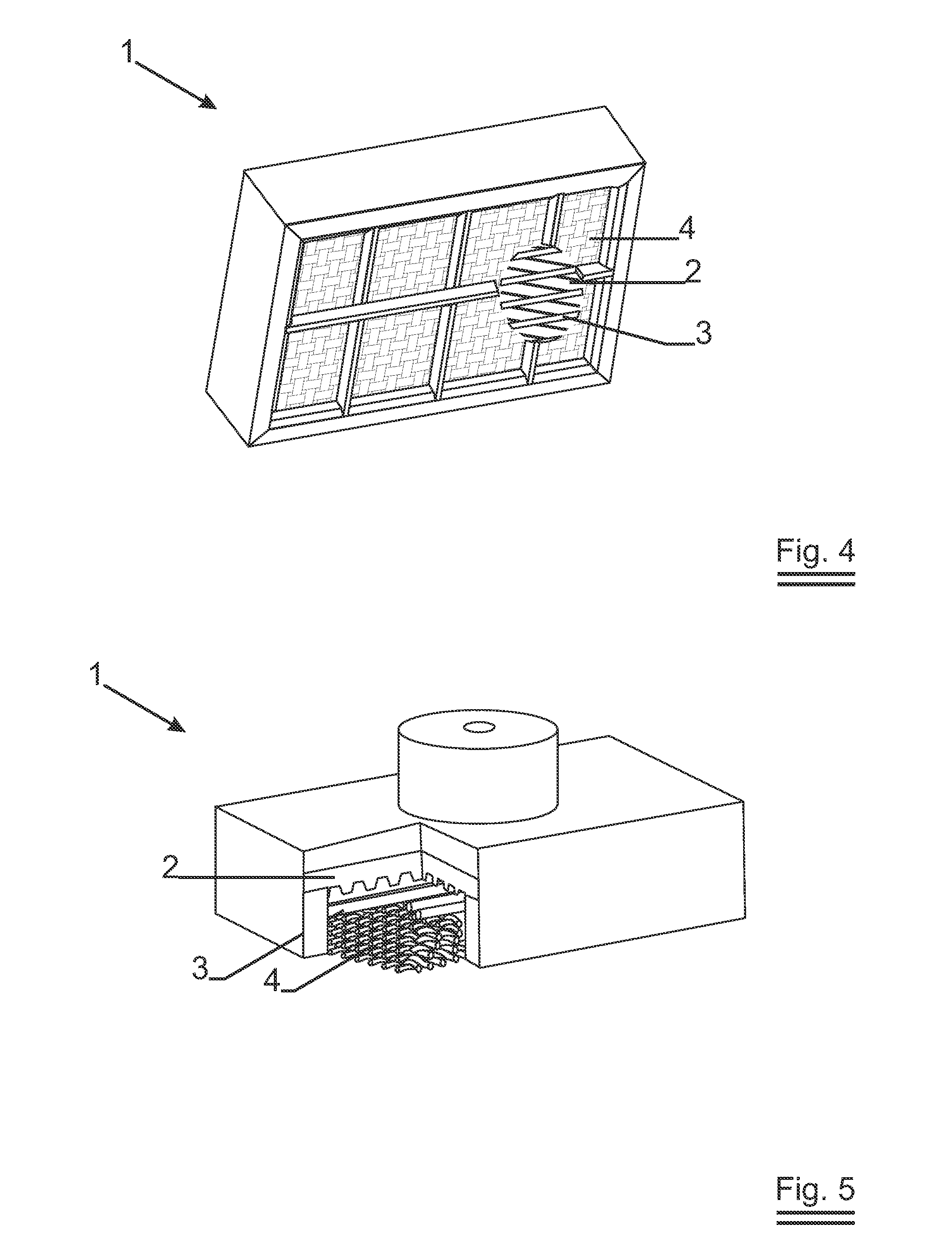Improved radiant burner
a radiant burner and burner plate technology, applied in the direction of burners, burner materials, combustion types, etc., can solve the problems of early failure local overheating of the burner plate, and increased radiation output of the radiant burner plate, so as to achieve less emissivity, energy efficiency, and higher radiative output
- Summary
- Abstract
- Description
- Claims
- Application Information
AI Technical Summary
Benefits of technology
Problems solved by technology
Method used
Image
Examples
Embodiment Construction
[0018]Example embodiments of the present invention will now be described with reference to FIGS. 1 to 7.
[0019]FIGS. 1 to 3 show cross sections of example embodiments of radiant burner plates which might be used in the present invention. FIG. 1 shows two levels of burner surface of the radiant burner plate 2, FIGS. 2 and 3 show three levels of burner surface, in two alternative forms.
[0020]FIGS. 4 and 5 show an example embodiment of the present invention. The first radiant screen 4 is a highly heat resisting metal grid fabricated from highly heat resistant steel grades, such as high level stainless steel grades like Kanthal APM or APMT, different grades of FeCrAl alloy designed for high temperature corrosion, Chrome / Nickel steel grades like Avesta 253 MA, 153 MA, Inconel 601, Incoloy 800HT, Incoloy MA956. The second radiant screen 3 is made of a highly heat resisting ceramic material, in this example aluminium or zirconium oxide, aluminium titanate, silicon oxide, corundum or mullite...
PUM
 Login to View More
Login to View More Abstract
Description
Claims
Application Information
 Login to View More
Login to View More - R&D
- Intellectual Property
- Life Sciences
- Materials
- Tech Scout
- Unparalleled Data Quality
- Higher Quality Content
- 60% Fewer Hallucinations
Browse by: Latest US Patents, China's latest patents, Technical Efficacy Thesaurus, Application Domain, Technology Topic, Popular Technical Reports.
© 2025 PatSnap. All rights reserved.Legal|Privacy policy|Modern Slavery Act Transparency Statement|Sitemap|About US| Contact US: help@patsnap.com



